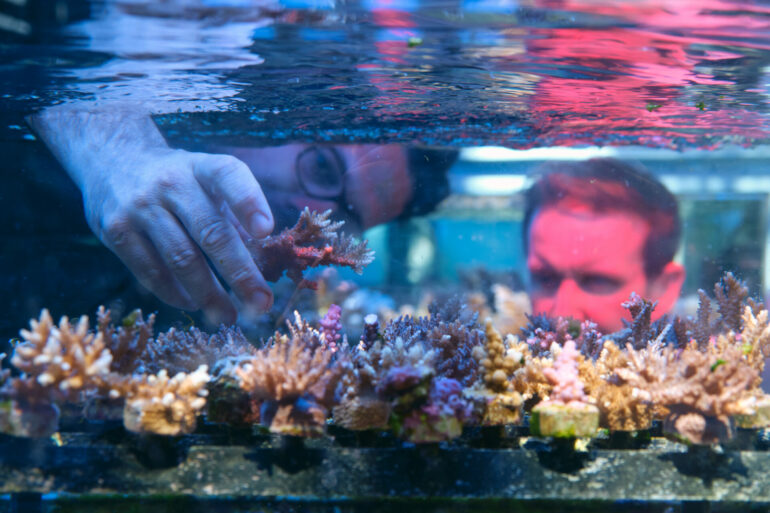A toolkit for environmentally friendly and cost-effective coral restoration could accelerate the recovery of degraded reefs along the coast of Saudi Arabia and beyond.
Coral reefs support around 30% of marine wildlife and provide invaluable ecosystem services, such as fishing, tourism and coastal protection. But these vital habitats are rapidly disappearing.
Despite international climate agreements to reduce carbon emissions and limit global warming, scientists fear that coral reefs have passed a tipping point and will continue declining even under the most optimistic climate scenarios. “We have lost roughly one-third of global coral cover in the last 50 years,” says marine scientist Sebastian Schmidt-Roach, “and we urgently need active measures to mitigate further decline.”
Coral restoration could now be the best line of defense, but progress has been limited by the cost and labor intensity of working in marine environments. Current restoration and coral gardening, or “reefscaping,” projects tend to be small, covering just 500 square meters on average. “We need to target areas of thousands of square kilometers,” says evolutionary biologist Manuel Aranda. “One way to do this is through selective breeding of more resilient corals so that we do not have to restore every reef ourselves, but rather leave some resilient colonies to do the job for us.”
To help achieve industrial-scale coral restoration, the Coral Hub team, including Carlos Duarte and Charlotte Hauser, have created MaritechtureTM—a suite of tools for transporting selectively bred corals from the lab to the reef. The innovation is published in the journal Frontiers in Marine Science.
The patented system includes tiles that act as a substrate for growing corals: stackable crates to which the tiles can be attached, and MaritechtureTM Reef Nails that will not enable quick attachment of the tiles to natural reef substrates. For reef surfaces where nails won’t work, they created MaritechtureTM Coral Pods—freestanding limestone structures consisting of two plates that interlink to create a four-legged “pod” with a large surface area for attaching tiles or coral fragments.
The researchers calculate that a team of six divers could deploy 90 pods, creating up to 250 square meters of reefscape in half a day. The coral tiles are microchipped so researchers can see what works where and what does not. “Interestingly, our structures have already attracted a lot of natural coral settlement,” adds Schmidt-Roach, a promising sign that these artificial reefs could self-colonize.
Designed in collaboration with artist Julian Charrière, the objects are inspired by the 20th century German Bauhaus style of simple yet functional shapes and rational materials. “Their simple design enables flexibility and low-cost and easy application across different habitats, including in developing nations” says Schmidt-Roach.
“We have tried to minimize the use of plastics and metals. Limestone is a natural reef-like material with significantly less carbon emissions than conventional steel- or cement-based solutions,” Schmidt-Roach explains. Where necessary, the team uses acrylonitrile butadiene styrene, a nontoxic and recyclable plastic that does not degrade in water.
More information:
Sebastian Schmidt-Roach et al, Novel infrastructure for coral gardening and reefscaping, Frontiers in Marine Science (2023). DOI: 10.3389/fmars.2023.1110830
Provided by
King Abdullah University of Science and Technology
Citation:
Minimalist art inspires a set of tools to maximize coral restoration (2023, April 6)



